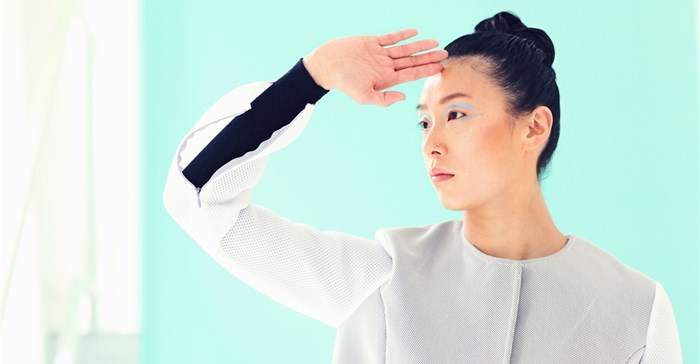#DesignIndaba2017: Fashion and tech empowering people with diversabilities
A graduate speaker on day two at Design Indaba 2017, Grace Jun has a master degree in design and technology and she focusses mainly on accessible clothing.

Jun became friends with a breast cancer survivor whose quality of life was consistently challenged by continual pain - even long after her double mastectomy.
“As I was working with her, I began to understand some of her daily challenges," said Jun. "I noticed that she would start throwing out some of her zipped clothing and tight fitted jackets."
The impact of paralysis
Particularly, Jun discovered that paralysis often impacted the way her friend dressed - especially when she had to dress herself without any help.
In her sessions with her physical therapist, her friend would briefly talk about a week's long worth of pain and discomfort by simply nudging her arm. "I found that highly inefficient and I thought technology and design could improve their communication.
Jun created a garment with an embedded circuit system using Bluetooth to capture the data of her range of motion (the movement of her arms) and it would transfer that information to a screen. "I hoped that this type of wearable or inclusive design would better allow her to communicate with her physical therapist," explained Jun.
It's more about having options
It was, however, not enough. To create something technical, you can't just do it without style or fashion.
"I noticed her desire for stylish clothing was less about her trying to be perfect, but it was more about her having options," said Jun.
Not having options has not only been a barrier for people with disabilities, but it's been a barrier for people who've had injuries, and those recovering from surgery.
The tension between fashion, tech, and putting it all together
She explained how she struggled with this tension between fashion, tech, and putting everything together. She wanted to empower her friend in her daily life and decided to start working on items that were functional as well as stylish.

Access & Closure, is one of the results - a series of seven jackets created for women who have undergone post-surgery breast cancer. By rethinking traditional pattern making techniques, clothing closures were used as functional elements.
Each jacket in the collection solves issues specific to different phases of the recovery process. The final jacket includes interactive technology, allowing the jacket to become a communication tool: spreading awareness of the changes and difficulties breast cancer survivors live through.

Design as a means of exploration
Rather than problem-solving, Jun says she has always seen design as a means of exploration.
"I took what I learnt from this one experience and decided to take it abroad to universities and local public schools in New York City for low-income families. I came across a group of people - Open Style Lab - whose mission is to create accessible clothing and raise awareness for people with diversabilities."
As their current executive director, she ensures that they do this in three ways:
- Increase awareness through public speaking at events like Design Indaba.
- Equipping the community through educational programmes to give them the skills to create accessible clothing.
- Distributing their know-how and techniques either online or through other channels.
Even after 25 years in the US with the disabilities act, accessible clothing is still a barrier. For many, it prevents social engagement, for example where there are unspoken dress codes such as at weddings, funerals and other social events.
"It's not just about disabilities or abilities, or performance, but we are also in an era where we have a growing ageing population. People are living longer so the chances of someone acquiring a disability in their lifetime is much higher," she explains. It is for this reason as well that Jun believes this type of design thinking is very urgent.
With more and more technology available to us every day, how can we use it to start designing inclusively?
For more, visit www.gracejun.com.




























